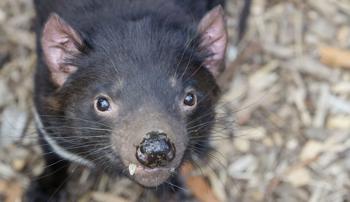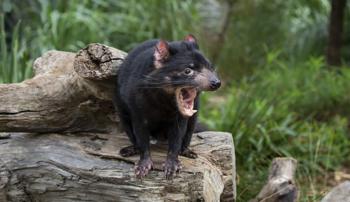Tasmanian Devil
Now listed as endangered, the Tasmanian Devil is the largest living carnivorous marsupial in the world.
It once lived on mainland Australia, but has only appeared in our island state since pre-European settlement. An 80% reduction in sightings of the Tasmanian Devil tells us the population is in rapid decline.

Major threats
The survival of Tasmanian Devils is seriously threatened by Devil Facial Tumour Disease which develops rapidly and is fatal.
Once the highly infectious cancerous tumours appear around the mouth, face and neck, the Devils generally die within three to six months.
The other threat is cars (and their drivers) killing them on the roads.

The plan for fighting extinction
Zoos Victoria, through Healesville Sanctuary, is a partner of the Save the Tasmanian Devil program.
We aim to breed and manage up to 50 Devils as part of the long-term insurance program.
In 2013, 2015 and 2017, Tasmanian Devils were released from Healesville to locations free of the tumour disease on Maria Island and the Tasman Peninsula.
Zoos Victoria also assists with monitoring animals and conducting research in the wild, in the lab and in the captive program.
How you can help
- Drive slowly and carefully on roads at night when around wildlife.
- Donate if you can. We're a not-for-profit organisation, so all donations help with conservation and programs such as Save the Tasmanian Devil.
- Visiting our zoos also supports our work to fight extinction.
- Discover more about local conservation events and join the growing number of wild activists taking action for local wildlife.
